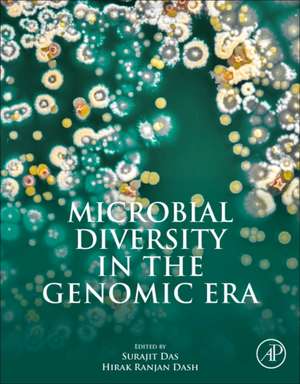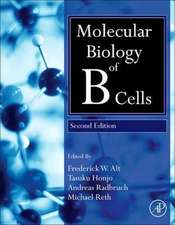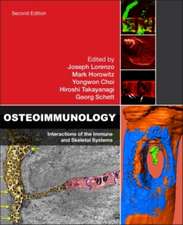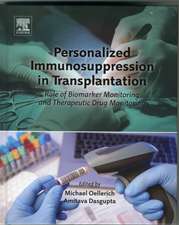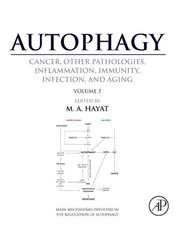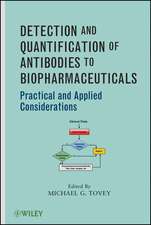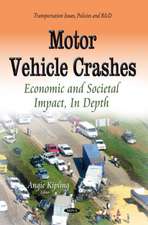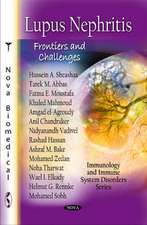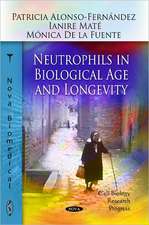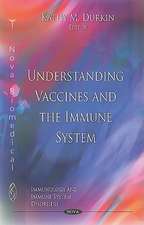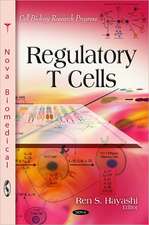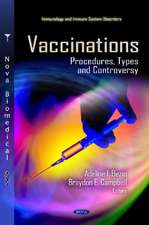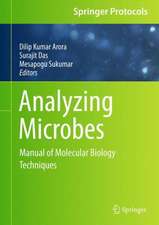Microbial Diversity in the Genomic Era
Editat de Surajit Das, Hirak Ranjan Dashen Limba Engleză Paperback – 18 oct 2018
- Discusses the techniques used for microbial taxonomy and phylogeny with their applications and respective pros and cons
- Reviews the evolving field of bacterial typing and the genomic technologies that enable comparative analysis of multiple genomes and the metagenomes of complex microbial environments
- Provides a uniform, standard methodology for species designation
| Toate formatele și edițiile | Preț | Express |
|---|---|---|
| Paperback (2) | 699.35 lei 5-7 săpt. | |
| ELSEVIER SCIENCE – 18 oct 2018 | 699.35 lei 5-7 săpt. | |
| ELSEVIER SCIENCE – 27 mar 2024 | 931.49 lei 5-7 săpt. |
Preț: 699.35 lei
Preț vechi: 957.90 lei
-27% Nou
Puncte Express: 1049
Preț estimativ în valută:
133.84€ • 139.21$ • 110.49£
133.84€ • 139.21$ • 110.49£
Carte tipărită la comandă
Livrare economică 07-21 aprilie
Preluare comenzi: 021 569.72.76
Specificații
ISBN-13: 9780128148495
ISBN-10: 0128148497
Pagini: 710
Dimensiuni: 216 x 276 x 44 mm
Greutate: 2 kg
Editura: ELSEVIER SCIENCE
ISBN-10: 0128148497
Pagini: 710
Dimensiuni: 216 x 276 x 44 mm
Greutate: 2 kg
Editura: ELSEVIER SCIENCE
Public țintă
Researchers in microbiology, biochemistry, molecular biology, genomics, genetics and phylogenyCuprins
Section I: Overview of microbial diversity
1.1 Methods of assessment of microbial diversity in natural environments
1.2 Metagenomic Achievements in Microbial Diversity Determination in Croplands: A Review
1.3 Genomic diversity and evolution of rhizobia
1.4 Microbial biodiversity study of a brackish water ecosystem in eastern India: The Chilika Lake
1.5 Microbial diversity and community analysis of Sundarban mangrove, the world heritage site
Section II: Molecular tools in microbial diversity
2.1Analysing Functional Microbial Diversity: An Overview of Techniques
2.2 Genetic analysis of the bacterioplankton biology and ecology through next-generation high-throughput molecular techniques
Gurdeep Rastogi, Pratiksha Behera, and Madhusmita Mohapatra
2.3 Molecular tools in microbial diversity: Functional assessment tool of genome and metagenome by MAPLE
2.4 A polyphasic taxonomic approach for designation and description of novel microbial species
2.5 Biochemical strategies to counter nitrosative stress: Nanofactories for value-added products
2.6 Exploring microbial diversity and function in petroleum hydrocarbon associated environments through Omics approaches
Section III: Extremophilic microbial diversity
3.1 Diversity of Psychrophilic Bacteria in Sea and Glacier Ice environments – Insights through Genomics, Metagenomics and Proteomics Approaches
3.2 Microbial diversity of thermophiles through the lens of next generation sequencing
3.3 Microbial ecology in extreme acidic environments: use of molecular tools
3.4 Alkaliphiles: Diversity and bioprospection
3.5Cyanobacteria from Brazilian extreme environments: toward functional exploitation
3.6 Comparative genomics of Halobacterium strains from diverse locations
3.7 Microbial community dynamics of extremophiles/extreme environment
3.8 Opening the black box of thermophilic autotrophic bacterial diversity
Section IV: Functional Microbial Diversity
4.1Functional microbial diversity in context to agriculture
4.2 Functional microbial diversity in contaminated environment and application in bioremediation
4.3 Structural and functional diversity of microbial metallothionein genes
4.4 Functional diversity of bacterial strategies to cope with metal toxicity
4.5 Functional microbial diversity: Functional genomics and metagenomics using MAPLE
4.6 Linking the environmental microbial diversity and antibiotic resistance
4.7 Applications of metagenomics in microbial bioremediation of pollutants: From genomics to environmental cleanup
Section V: Microbial diversity and infectious diseases
5.1 Molecular techniques for diagnosis of bacterial plant pathogens
5.2 Molecular techniques for the study of microbial diversity with special emphasis on drug resistant microbes
5.3 Exploring human bacterial diversity towards prevention of infectious disease and health promotion
5.4 Prevalence of Multidrug Resistance Efflux Pumps (MDREPs) in Environmental Communities
5.5 Pathogenic microbial genetic diversity with reference to significant medical and public health
Section VI: Future directions of microbial diversity studies
6.1 Understanding the structure and function of extreme microbiome through genomics: scope and challenges
6.2 The role and future possibilities of next-generation sequencing in studying microbial diversity
6.3 Taxonomical diversity of extremophiles in the deep biosphere
6.4 Molecular evolution of Xenobiotic-degrading genes and mobile DNA elements in soil bacteria
1.1 Methods of assessment of microbial diversity in natural environments
1.2 Metagenomic Achievements in Microbial Diversity Determination in Croplands: A Review
1.3 Genomic diversity and evolution of rhizobia
1.4 Microbial biodiversity study of a brackish water ecosystem in eastern India: The Chilika Lake
1.5 Microbial diversity and community analysis of Sundarban mangrove, the world heritage site
Section II: Molecular tools in microbial diversity
2.1Analysing Functional Microbial Diversity: An Overview of Techniques
2.2 Genetic analysis of the bacterioplankton biology and ecology through next-generation high-throughput molecular techniques
Gurdeep Rastogi, Pratiksha Behera, and Madhusmita Mohapatra
2.3 Molecular tools in microbial diversity: Functional assessment tool of genome and metagenome by MAPLE
2.4 A polyphasic taxonomic approach for designation and description of novel microbial species
2.5 Biochemical strategies to counter nitrosative stress: Nanofactories for value-added products
2.6 Exploring microbial diversity and function in petroleum hydrocarbon associated environments through Omics approaches
Section III: Extremophilic microbial diversity
3.1 Diversity of Psychrophilic Bacteria in Sea and Glacier Ice environments – Insights through Genomics, Metagenomics and Proteomics Approaches
3.2 Microbial diversity of thermophiles through the lens of next generation sequencing
3.3 Microbial ecology in extreme acidic environments: use of molecular tools
3.4 Alkaliphiles: Diversity and bioprospection
3.5Cyanobacteria from Brazilian extreme environments: toward functional exploitation
3.6 Comparative genomics of Halobacterium strains from diverse locations
3.7 Microbial community dynamics of extremophiles/extreme environment
3.8 Opening the black box of thermophilic autotrophic bacterial diversity
Section IV: Functional Microbial Diversity
4.1Functional microbial diversity in context to agriculture
4.2 Functional microbial diversity in contaminated environment and application in bioremediation
4.3 Structural and functional diversity of microbial metallothionein genes
4.4 Functional diversity of bacterial strategies to cope with metal toxicity
4.5 Functional microbial diversity: Functional genomics and metagenomics using MAPLE
4.6 Linking the environmental microbial diversity and antibiotic resistance
4.7 Applications of metagenomics in microbial bioremediation of pollutants: From genomics to environmental cleanup
Section V: Microbial diversity and infectious diseases
5.1 Molecular techniques for diagnosis of bacterial plant pathogens
5.2 Molecular techniques for the study of microbial diversity with special emphasis on drug resistant microbes
5.3 Exploring human bacterial diversity towards prevention of infectious disease and health promotion
5.4 Prevalence of Multidrug Resistance Efflux Pumps (MDREPs) in Environmental Communities
5.5 Pathogenic microbial genetic diversity with reference to significant medical and public health
Section VI: Future directions of microbial diversity studies
6.1 Understanding the structure and function of extreme microbiome through genomics: scope and challenges
6.2 The role and future possibilities of next-generation sequencing in studying microbial diversity
6.3 Taxonomical diversity of extremophiles in the deep biosphere
6.4 Molecular evolution of Xenobiotic-degrading genes and mobile DNA elements in soil bacteria
